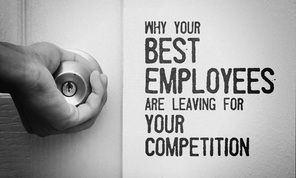
2020 will be forever known as a year that drastically changed our lifestyles, how we lead our lives and our working practices. In this series of three articles for December, we’re taking a look back at what 2020 threw at businesses across Ireland. First up - Recruitment & Retention.
How 2020 Started Vs How It’s Going…
At the beginning of 2020, Irish business was strong; the days of the financial crash were long behind us, unemployment was at its lowest in years and Irish living standards were continuing to rise. Then Covid-19 struck.
Unemployment has certainly risen during the pandemic, and whilst the true picture of the state of our unemployment rates has yet to be painted due to the continuing financial support packages available, it’s clear that the pandemic has made incremental impacts on industries and jobs across a wide range of sectors.
Particularly during the first wave of the virus, it seemed like everyone’s LinkedIn profile picture featured an ‘open to work’ banner whilst our news feeds were filled with posts from professionals spanning across generations of a career, all in need of some work.
As we come near to the end of 2020, your HR team will have been challenged with remote recruitment and onboarding through to organising lay-offs and redundancies, whilst also trying to motivate the remaining staff to retain the skills and talent that help lift your company to success.
Let’s explore our key lessons about recruitment & retention in 2020:
Lesson #1 - Remote Interviews Are Here to Stay
Whilst major firms have used remote, virtual interview tools for quite some time now, many Irish businesses had to move to remote interviews rather reluctantly as the pandemic drew on.
It’s important to note that while some second stage interview processes may take place in person as we attempt to recover from the pandemic, companies should understand the expectation that remote, virtual interviews, at least at initial stage, may be here to stay.
For your HR team, this may be the breathing space they need as your business moves into 2021 and may want to begin hiring again. Recruitment is a time-consuming process; remote interviews can cut out the unnecessary time wasting of booking and setting up interview rooms, and give your HR team back some time to spend honing their interview practices.
Lesson #2 - Invest In Online Onboarding Tools
While 2020 for many businesses meant to beginning of a swathe of unfortunate redundancies and lay-offs, for others the boost to online shopping & e-commerce trends meant a boost to their teams as they began scrambling for new team members remotely.
While most employees will seek a hybrid model of workplace hours, both in the office and at home, your business should consider serious investment in online onboarding tools.
Not only will this help protect your hiring processes if the Covid-19 crisis continues throughout 2021, but it will also help to streamline your training & development of new staff members. Whether you are a small business or a larger organisation, online onboarding can help provide consistency to new colleagues and ensure they are ready to drive your company to further success through enhanced skillsets from the outset of their career with your company.
Lesson #3 - Always Put Your Staff First To Boost Retention
As the country went into Lockdown in March, we saw the best & the worst of what can happen when a business is in crisis mode. Often financials come first, throwing care for employees to the wayside.
Regardless of the impact 2020 has made to your business, there is no excuse for this to happen again. If you want to retain staff in 2021 and beyond, putting them first is key.
Plan for similar worst case scenarios - whether this means having a clear and robust lay-off/redundancy package in place, strong supply chain partners that can provide the right work equipment if forced to move employees to full remote working again or a workplace wellbeing initiative that can help employees in the office or at home. Whatever your planning consists of, make sure it puts staff first to help retain your key skillsets for years to come.







 RSS Feed
RSS Feed